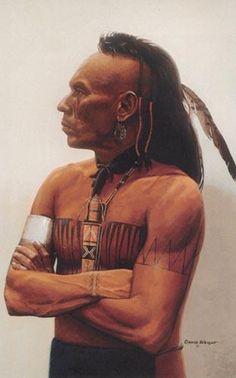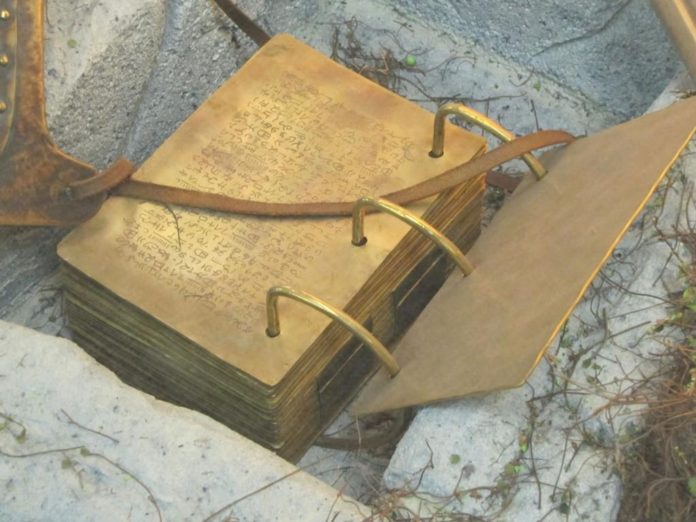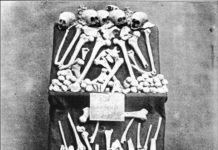JOSEPH SENDS MARTIN HARRIS TO FIND A TRANSLATOR
FEBRUARY – MAY 1828 (See Map)

1. Feb 1828 Martin Harris visits Joseph in Harmony and receives the “Caractors.” Harris returns towards home before heading east.

2.-3 Harris visits The Canandaigua Academy, a private school for boys established in 1791, potentially they had the resources to help Harris find scholars in the east and even books that may have helped him superficially analyze the characters. Then he goes to Palmyra before heading east.
4. A copyright for the Book of Mormon was submitted to the State Office in Utica on June 10, 1829. Harris may have visited for this reason.

5. Luther Bradish, Lt Governor of New York, was a diplomat, world traveler, knew many languages, and was a family friend of Harris.
6. Samuel Mitchill was the vice president of Rutgers Medical College
7. After Harris went to Albany and spoke with Bradish according to one source, Harris may have continued on to Philadelphia after meeting with Anthon. The American Philosophical Society in Philadelphia, under the leadership of Thomas Jefferson encouraged research about Native Americans and helped support scholarship about their origins, culture, and history.
8. Dr. Charles Anthon, Professor of Classical Languages 1820-1867
9. Harris Returns to Palmyra June 1828 and loses the 116 pages

Everyone knows about the “Caractors” copied from the plates for the inspection of the East Coast scholars Samuel Mitchill and Charles Anthon. MacKay and Dirkmaat have found evidence of many such copies circulating among the Church members in the early years. They were used to arouse interest and to substantiate the reality of the translation. The characters were copied onto paper used to wrap the text of the Book of Mormon as it went off to the press. They remind us of the fact that Martin Harris and

Joseph Smith did not know the characters were Egyptian until after Harris’ New York expedition in February 1828. The language of the plates could not have come to light until after translation began in March 1828. Before that time, Harris and Smith were more likely to think the characters were ancient American, some variety of an Indian language. They went to Mitchill because he was the country’s expert on Indian dialects and likely to Charles Anthon, best known as a classicist, because he also collected Indian oratory. The authors further suggest that Joseph was not sure at first if he was the one to translate the plates at all. He told Joseph Knight he wanted the plates translated, but at first he may have assumed a learned person would do it…” Foreword By Richard Lyman about the book, “From Darkness Unto Light” Michael Hubbard McKay, Gerrit J. Dirkmaat.
WHY JOSEPH SMITH AND MARTIN HARRIS DESIRED TO SPEAK WITH SAMUEL MITCHILL
AN INTIMATE KNOWLEDGE OF THE IROQUOIS INDIANS

1. “The earliest records, found in 1829 New York newspaper accounts, verify that Mitchill was not only the person Harris was sent to, but that he was the central figure in the story… Much of Mitchill’s work focused upon the area around New York State, in which he argued that the region was much older than Europe… Mitchill possessed special interests and experiences that may have prompted Bradish and Anthon to send Martin Harris to see him: his intimate knowledge of the American Indian and New York State’s geology and mineralogy; a marked familiarity with western New York, including Ontario County, as well as with American antiquities; a knowledge of ancient languages and hieroglyphics; and finally, his genuine love of people.”

2. “His interest in America’s native peoples grew directly out of his careful observations and prodigious knowledge as perhaps the leading mineralogist and geologist of his time. A frequent visitor to Niagara, Ontario, Genesee, Seneca, Cayuga, and Onondaga counties, he had found and catalogued a great many salt-based sea fossils from this region.”
3. “Trusted and highly respected, Mitchill had been adopted into the Mohawk fraternity, had learned their language, and had translated into English many of their Indian war songs. The Oneidas and the Onondagas had even bestowed personal names on him. He sustained an abiding interest in Indian languages and later concluded that all tribal languages were derived from the same linguistic root…”
4. “ … He shared his findings freely with contemporary colleagues and students of the American Indian at a time when much discussion focused on their origins and culture. His research interests had led him to discover several ancient Indian burial mounds and fortifications stretching across upstate New York from Sacketts Harbor to Boughton Hill in Ontario County and from Canandaigua to Onondaga.”

5. His lifelong friend and fervent admirer De Witt Clinton, likewise came to consider such constructions to be of ancient origin, the places of great battles between ancient Indian tribes long before the arrival of the European races.”
6. “There remain two other significant reasons why Mitchill showed such interest in his Palmyra visitor. The first was the simple matter of timing. Harris could not have caught the good professor at a more propitious moment. For the previous eight years Mitchill had been busily propounding and publishing one aspect or another of his ‘two-races’ theory of ancient America. (See Ethan Smith, View of the Hebrews; or, The Tribes of Israel in America, 1825). His interest in the history of the ancient American Indians was at a peak when Harris arrived. The second was Mitchill’s boundless curiosity, kindliness, and open and engaging personality.” From Darkness Unto Light, Michael Hubbard McKay, Gerrit J. Dirkmaat
Thanks to Jason Robertson for sending this you tube video with more information about Martin Harris. The video is called, “To the Most Learned Men of this Generation: Martin Harris and HIs Visits East, 1828”





